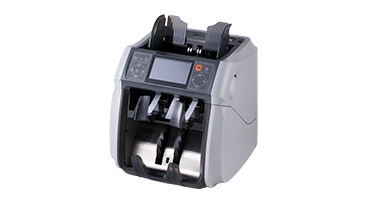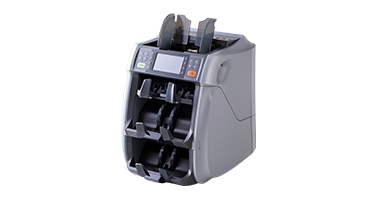Product
Banknote Sorter
Your Trustful Bank Equipment Supplier
Banknote Sorter
Our features
Advantages of Yuting Sorter
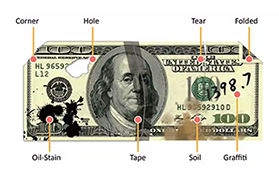
Fitness Sort
Handle ATM fitness sorts of new, old, or circulating notes, taped, corner missing, holes, tears, folded, stains, soil, and graffiti. Our machines are built for robust performance in challenging scenarios.

Cash Data Management
Provides detailed cash processing data and track serial numbers, essential for banks and CITs to optimize their cash flow management and maintain accurate records for auditing and tracking.

Central Bank Testing
Our machines meet stringent international standards and have achieved ECB, RCB, and CE certifications. This ensures our equipment's reliability and fosters trust across diverse markets.
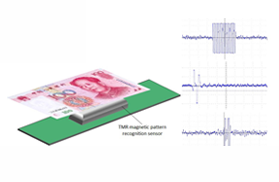
TMR Technology
Employs TMR magnetic pattern recognition sensors, to retrieve the embedded magnetic image on banknotes, one of the most advanced security features utilized by major currencies worldwide.
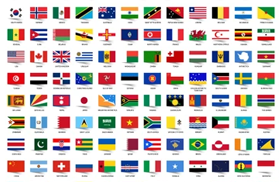
Multi-Currency Support
Designed for global commerce, our machines efficiently process up to 60 different currencies simultaneously, simplifying operations for multinational users.

Compact Design & UI
Feature flexible, modular designs that ensure easy customization and scalability. The user-friendly interface maximizes productivity, without compromising on functionality or performance.

Expertise
Collaborating with Industry Experts
At YUTING, we pride ourselves on our advanced sensors and counterfeit detection technology. Our cutting-edge solutions ensure accuracy and reliability, essential for our B2B partners. Working closely with professionals in the industry, we deliver top-notch quality and service.
Production Process
Ensuring excellence in every step, from detailed 3D modeling to rigorous software and hardware testing, and high-performing banknote counters and sorters.

Modeling
We use advanced software for precise 3D modeling, ensuring our machines meet the highest standards before production.

Anti-Counterfeiting Software Testing
Our software undergoes rigorous testing with various scenarios, guaranteeing accurate detection and secure currency handling.

Hardware Testing
Each hardware component is meticulously tested for performance and durability, ensuring our machines withstand heavy usage and maintain efficiency over time.

Production
We follow strict quality control protocols. From assembly to final inspection, every unit is built for exceptional performance and reliability.
The Complete Buyer’s Guide to Banknote Sorter
Table of Contents
chapter 1
How Do Banknote Sorters Work?
Banknote sorters are designed to efficiently process and categorize banknotes based on various criteria such as denomination, authenticity, and fitness.
- Feeding Mechanism: Banknotes are fed into the machine through a hopper. The notes are then transported through the machine via rollers and belts.
- Detection and Sorting:
- 1+1 Pocket Sorter: This sorter has one input pocket and one output pocket. Banknotes are processed and either accepted or rejected based on detection results.
- 2+1 Pocket Sorter: This sorter has one input pocket and two output pockets, allowing for more complex sorting. One pocket typically holds the sorted, fit notes, while the other holds unfit notes.
- Output: Sorted banknotes are directed into their respective pockets, ready for collection and further processing.

chapter 2
Technologies of Counterfeit Detection
Counterfeit detection technologies are crucial for ensuring the authenticity of banknotes. These include:
- Advanced Image Processing
- Magnetic Ink (MG) Detection
- Metal Thread (MT) Detection
- Infrared (IR) Detection
- Ultraviolet (UV) Detection

Currency Detection by Image Processing
Image Capture
- CIS Sensors: Contact Image Sensors (CIS) are commonly used in image processing for currency detection.
- Key Features Identified: Watermarks, Holograms, Microprint, Serial Numbers.
Pattern Matching
- Database Comparison: The extracted features are compared against a comprehensive database of genuine banknotes.
- Algorithms: Advanced algorithms analyze the captured images and match the detected features with those in the database.
- Authentication: The machine uses pattern recognition techniques to verify the authenticity of the banknotes.
Sorting
- Authentic vs. Counterfeit.
- Denomination Sorting.
- Fitness Sorting.
IR security features

Magnetic protection of a Euro banknote

Segmented and TMR Sensor

MG, MT Detection and Magnetic Sensor
- MG: Magnetic ink detection utilizes the magnetic properties of the ink used in printing authentic banknotes.
- MT: Identifying the metallic threads embedded within the banknote paper.
Two common types of magnetic sensors used in banknote detection are segmented magnetic heads and TMR (Tunnel Magnetoresistance) magnetic heads.
Segmented Magnetic Heads
- Operation: These sensors cover only specific sections of the banknote at any given time.
- Advantages:
- Cost-Effective: Segmented magnetic heads are generally less expensive to produce and maintain.
- Localized Detection: Can be useful in applications where specific areas of the banknote need to be examined closely.
- Limitations:
- Blind Spots: Due to the segmented nature, there can be blind spots or areas that are not covered by the magnetic head. This can potentially miss some magnetic features.
TMR (Tunnel Magnetoresistance) Magnetic Heads
- Operation:
- Full Coverage: TMR magnetic heads cover the entire width of the banknote, ensuring that no part of the note is left undetected.
- Simultaneous Detection: Capable of detecting both MG and MT features simultaneously across the entire surface of the banknote.
- Advantages:
- High Sensitivity: TMR sensors are highly sensitive to magnetic fields, providing accurate detection of even faint magnetic signals.
- Complete Coverage: Eliminates blind spots, ensuring that all areas of the banknote are scanned for magnetic properties.
- Limitations:
- Higher Cost: TMR magnetic heads are generally more expensive to manufacture and integrate into machines.
- Complexity: Requires more sophisticated technology and calibration to operate effectively.

Infrared (IR) Detection
IR detection is effective for detecting embedded security features that are not visible to the naked eye, by
- IR Emission: The machine emits infrared light onto the banknote.
- Reflection/Absorption: Genuine banknotes reflect and absorb IR light in characteristic ways due to the materials and inks used.
- Sensing: IR sensors detect the reflected IR light and analyze the patterns.
- Comparison: The detected IR patterns are compared with the expected patterns of genuine banknotes.

Ultraviolet (UV) Detection
- Principle: UV detection involves using ultraviolet light to reveal features on banknotes that are invisible under normal lighting conditions. Authentic banknotes have special UV-reactive inks and fibers embedded within them.
- Process:
- Emission: The machine emits UV light onto the surface of the banknote.
- Reaction: Genuine banknotes will display specific patterns, colors, or symbols under UV light, while counterfeit notes may not react or will react differently.
- Detection: Sensors detect the UV-reactive patterns and verify their authenticity based on pre-programmed data.
chapter 3
Counterfeit Detection Pattern on US Dollars
US dollars incorporate several anti-counterfeiting features:
- Watermarks: Embedded within the paper and visible when held up to light.
- Security Threads: Embedded strips that glow under UV light and contain text indicating the note’s denomination.
- Color-Shifting Ink: Ink that changes color when viewed from different angles.
- Microprinting: Extremely small text that is difficult to replicate accurately.
- 3D Security Ribbon: A blue ribbon woven into the note with images that move when the note is tilted.


chapter 4
What is Fitness Sort?
Fitness sorting assesses the physical condition of banknotes to determine their suitability for continued circulation. The main criteria of fitness sorting include:
By CIS
- Counterfeit Bills: Any fake bill is rejected.
- Non-Standard Dimensions: Banknotes with dimensions that do not meet the standard.
- Incomplete Notes: Banknotes with missing parts.
- Worn or Damaged Notes: Includes notes with holes, tears, tape, or folded/missing corners.
- Soiled or Graffitied Notes: Excessively dirty or marked bills.
- Specific Denominations or Years: Some denominations or specific years are not allowed to be circulated and are considered unfit.
Tape Detection and Thickness Sensor
Tape detection in banknote sorters can be achieved using ultrasound sensors or mechanical sensors:
- Ultrasound Sensors:
- Principle: Emit ultrasonic waves and measure the time it takes for the waves to bounce back.
- Detection: Detects the presence of tape or adhesive by the difference in ultrasonic wave reflection caused by the tape.
- Mechanical Sensors:
- Principle: Use physical contact to detect the presence of tape or adhesive on the banknote.
- Detection: Typically involves a lever or roller that senses changes in thickness or texture.

FAQ
Quick Question

Absolutely. Our banknote sorters are designed for robust performance in high-volume environments such as banks, retail chains, and financial institutions. They efficiently manage large batches of notes, ensuring fast and reliable sorting.
Our sorters utilize sophisticated imaging technologies, including RGB, IR, and UV imaging, as well as IR transmission imaging. Additionally, our machines incorporate Magnetic and Magnetic Thread detection using TMR technology, as well as Fitness Sorting, handling a wide variety of banknote conditions—ranging from new to old and circulating notes. They effectively process notes with physical imperfections such as taped, tears, folds, stains, and graffiti, ensuring only genuine and fit banknotes are circulated.
YUTING provides comprehensive technical support, including software updates, hardware maintenance, and spare parts supply. Our team is available to ensure your sorter operates efficiently and continues to meet your business needs.
Yes, all YUTING banknote sorters come with a 1-year warranty that covers defects in materials and workmanship. Specific warranty details, including duration and coverage, are provided with the purchase of each machine.
Yes, we offer customization options through our OEM and ODM services. Whether you need specific features or adaptations for your operational environment, our engineers can tailor our sorters to meet your exact requirements. For more detailed information or if you have further questions, please contact our customer service team.

